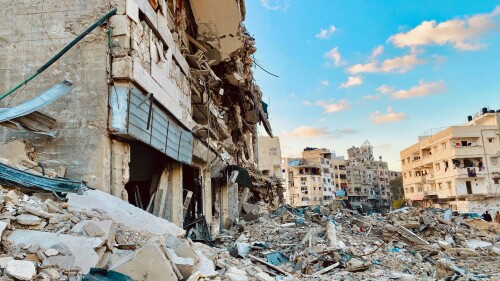Something new is brewing in the northern West Bank. In recent months, in the cities of Jenin and Nablus, the Israeli authorities have observed the emergence of novel and unfamiliar forms of armed Palestinian political organization. These new structures are only loosely associated with existing Palestinian political movements. They represent the coming of age of another generation.
Committed to a broadly Islamist political outlook, with no interest or reference to diplomatic processes, and supporting a strategy of armed insurgency, this inchoate gathering represents a fresh challenge both to Israel and to the Ramallah-based Palestinian Authority.
Alongside this emergence and related to it, there has been an uptick in recent months of activity by individuals professing loyalty to the Islamic State organization, in both the West Bank and Israel. The last significant wave of terror attacks, in the April-May 2022 period, featured both incidents emerging from the Jenin-Nablus areas, and acts committed by individuals linked or loyal to Islamic State.
These linked phenomena may well show in outline the next phase of the Israeli-Palestinian conflict.
So, what exactly is going on?
The current ferment in Jenin and Nablus derives from a combination of factors: The pandemic and its associated closures exacerbated impoverishment. The Palestinian Authority has reduced its activities in the area, and its credibility is nonexistent among the younger generation. This rising generation in turn did not witness the bitter insurgency of the Second Intifada in the 2000-2004 period, or the Israeli military and intelligence campaign that crushed it. Weaponry proliferates and is readily available—often in the hands of clans or organized criminal groups.
This rising generation did not witness the bitter insurgency of the Second Intifada in the 2000-2004 period, or the Israeli military and intelligence campaign that crushed it.
All these factors have combined to produce a loose gathering of probably no more than several hundred young men in each of these cities, who are ready for violent action against Israelis—soldiers and civilians alike.
The well-known Palestinian organizations are seeking to organize in this space. Hamas is traditionally relatively weak in the northern West Bank. Islamic Jihad, and Fatah are the strongly rooted movements there.
The Iran-supported Islamic Jihad is particularly prominent in Jenin. In late 2021, it founded the “Jenin Battalion,” with the intention of organizing the armed young men of the city and refugee camp under its banner. The ‘battalion’ appears to have no real hierarchy, and it brings together operatives from a variety of organizations and of none.
Islamic Jihad’s contribution, presumably, is financial. But it is seeking to ride a wave, not generating it.
Similarly, in Nablus, “Lion’s Den” is the name given to the umbrella grouping bringing together the young militants. Again, money may be coming from the more traditional structures—Hamas or Islamic Jihad in Nablus. But the impetus is local and comes from below.
The result is a rising arc of violence. It began during Ramadan, this year (April-May). On March 29, April 7, April 29, and May 5, deadly terror attacks which together took the lives of 12 Israelis, were launched by individuals hailing from the Nablus and Jenin areas. These attacks placed the areas in question on the radar of the Israeli security forces.
Near nightly raids into these cities have followed. More than 100 Palestinians have been killed, and around 1,500 arrested in the resultant clashes. The attacks continue to trend upward. Figures released by the Shin Bet, Israel’s internal security agency, in late September show a total of 212 attacks—such as throwing Molotov cocktails, pipe bombs, and stabbings—that month, compared to 172 in August, and 113 in July. There were 34 shooting attacks in September, compared to 23 in August, and 15 in July. Two Israelis, a soldier and a civilian, were killed in September.
Alongside and parallel to the growth of the attacks emerging from the Jenin and Nablus areas, there are indications of the emergence of active Islamic State activity in Israel and the West Bank.
Alongside and parallel to the growth of the attacks emerging from the Jenin and Nablus areas, there are indications of the emergence of active Islamic State activity in Israel and the West Bank. The first three acts of the wave of terror that took place during Ramadan didn’t come from the northern West Bank. Rather, all three—in Jerusalem, Beersheba and Hadera, all within Green Line Israel—were committed by individuals professing loyalty to IS. Seven Israelis were killed in these incidents. The Israeli authorities just last week took down an IS cell in Nazareth planning a series of attacks.
So, what does all this mean, and what might it portend? Deterioration to a new, 2000-2004 style insurgency shouldn’t be ruled out. But sporadic, largely un-directed ongoing violence is equally likely. Palestinian politics is split and stalemated. Neither diplomacy nor insurgency have broken the enemy or made real gain. The current inchoate military organizing is a knee-jerk, despairing response to this, lacking any political horizon, but fueled by considerable fury, and by an unchanged politics that rejects all compromise.








